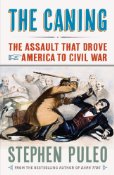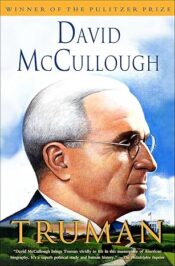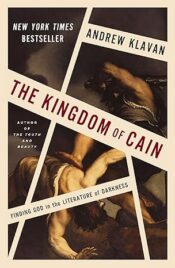
The Caning By Stephen Puleo
 The Caning
The Caning
The Assault that Drove America to Civil War
By Stephen Puleo
Puleo has done a masterful job of evoking the color, politics and passions of the six years preceding the Civil War. Within the book’s covers are many familiar personages, among them, L.Q.C. Lamar, William Seward, Henry Wadsworth Longfellow and Roger B. Taney. In addition, are others who have faded into the shadows of history. One of those is the South Carolina congressman who delivered The Caning.
The event occurred on May 22,nd 1856 in the US Senate Chambers when Preston S. Brooks struck Massachusetts Senator Charles Sumner about the head and shoulders with his cane until the latter fell unconscious to the floor.
Brooks was provoked by Sumner’s Senate speech, The Crime Against Kansas, forty-eight hours earlier. Sumner, a radical abolitionist, verbally assaulted the South in general and Senator Andrew Butler of South Carolina, Senator James Mason of Virginia and Senator Stephen Douglas of Illinois (author of the Kansas-Nebraska Act) in particular.
To win Southern support for the Act, Douglas had agreed that Kansas would be eligible for settlement by Southern slave-owners, despite being north of the Missouri Compromise in the “free†territory zone. Settlers would determine, through “popular sovereignty,†whether to allow slavery within their territories. Douglas envisioned the Act as a compromise that would ease tensions and maybe even settle the slavery issue. It had the opposite effect.
What should have been predicable was that Northern and Southern sympathizers would swarm Kansas to determine whether it would be slave or free. Kansas became a bloody battleground. Sumner blamed Southerners for the bloodshed. He hated the South, and especially South Carolina, a hot bed of secession. He directed his most insulting invective against Preston Brooks’s cousin, the “elderly, ailing and absent Butler.â€
Preston Brooks, in addition to being an ardent defender of Southern rights and a slaveholder, was a Southern gentleman with all that implies. He subscribed to the code of honor entrenched in his class and tradition. In Brooks’s view, he was honor bound to avenge his region and his cousin for the calumny hurled at them by Sumner. He conceived the caning as just punishment for Sumner’s two-day rant against the South in general and South Carolina in particular.
Puleo’s thesis, reiterated throughout the book, is that the caning was more than a breach of Senate decorum. It was a seminal event that hardened positions, North and South, and persuaded both sides that they could find no common ground on which to a base a rational discussion of differences. In the author’s words:
After the caning, the slavery question was transformed from a political and intellectual debate to a visceral maelstrom that pushed the country inexorably toward civil war.
Puleo’s dramatic depiction of the caning is spellbinding. But it is in his recounting of the opposite reactions in the North and South that the author burnishes his thesis.
Charles Sumner, who had sought adulation for most of his life but found it frustratingly illusive, was now being showered with it, but his physical condition rendered him unable to enjoy it fully…
Thus, Sumner was enthusiastically greeted when he returned to Boston.
The caning had succeeded in accomplishing something Sumner and his antislavery acolytes could not do by themselves –unify a previously divided Boston, wild-eyed abolitionists and staid commercial merchants alike, against what its citizens now saw as the common enemy of Southern barbarism.
Conversely, Preston Brooks became an overnight hero in the South. His action was …
deemed heroic by Southerners because it represented a boiling over of an entire region’s deep rage and disgust with self-righteous, hypocritical abolitionists….
Puleo is even handed in his description of both protagonists. Sumner is a difficult man to like but, as the author points out, his dedication and devotion to the abolitionist cause cannot be doubted. Puleo credits him with “moral courage, a deep belief in equality between the races, honesty, and clarity of thought.â€Â But Sumner was also arrogant, egotistical and narcissistic, totally lacking in the social savvy or empathy that is the stock and trade of most politicians. He was incapable of merely disagreeing with someone’s views, his personal attacks were unrestrained by collegial or friendship ties. He was brilliant, driven, uncompromising and intemperate.
The differences between Sumner and Brooks are not confined to politics. “Virtually everyone who knew Brooks described him as a man ‘of kind heart and tender sensibilities.’†He was devoted to his family and steadfastly loyal to his state. Puleo examines the cultural and personal pressures that induced the usually mild mannered Brooks to retribution. But Preston’s short, unremarkable political career, up to the caning, and his tragic, untimely death from infection at age 37 in January of 1857 provide less for Puleo to write about.
At the same time as the caning a pro-slavery mob destroyed the free-soil town of Lawrence, Kansas. In retaliation, the fanatical John Brown and his sons murdered five pro-slavery settlers in cold blood. The “Pottawatomie massacre,†as it was called, provoked retaliation upon retaliation culminating in an insurgency that took hundreds of lives and shocked the nation.
Another shock occurred in 1857 when Chief Justice Roger B. Taney ruled in the Dred Scott case.
While the author admits “no direct documentary evidence exists†that Taney’s decision “followed directly from Preston Brooks savage beating of Charles Sumner nearly ten months earlier†he nevertheless concludes:
But to the extent that history can be analyzed as resulting from a domino effect of causal events, it would be foolhardy to ignore the canings clear influence on one of the most divisive and sweeping–‘far reaching’ is perhaps more accurate –Supreme Court decisions in American history.
Taney, born and raised in Maryland and a Southern sympathizer, ruled that citizens could only prohibit slavery at the moment of admission to statehood and not before. In essence, he repealed the Missouri Compromise and sanctioned the free spread of slavery. The decision outraged Republicans and delighted the South. According to Puleo:
Roger Taney’s majority opinion in the Dred Scott case was a byproduct of that was happening around him, most of it caused or affected by the caning–and that included the emotional postscript of the caning itself, the sudden death of Preston Brooks, a new Southern hero…
Perhaps as the author insists, the caning was the event that began the inexorable slide to war. But there is much to be said for the view that other factors had as much or more influence.
James J Cooper in his book, We Have the War Upon Us (reviewed here), cites Congressman Charles Francis Adams (son of John Quincy Adams and grandson of John Adams), who identified the central issue as “one of power… Adams identified its loss as the South’s ‘only true grievance.’ ‘The South, as he so aptly put it, ‘want[ed] to continue to rule.’ Adams could perceive no effective palliative, for, in his judgment, ’the true difficulty is incurable.’“
The agricultural South saw its political and economic power waning against a growing and industrialized north. Cooper writes:
Lincoln’s election ended Southern domination over the federal government that had prevailed since the Founding. The siren call of southern secessionists was that the only way to save their party and their way of life from Republican tyranny was to form a separate and independent confederacy.
Arguably then, the sectional divide was unbridgeable with or without the caning. Readers can draw their own conclusions. They may wish the author had allowed them to do so. For this reviewer, Puleo’s repeated efforts to bolster his thesis mutated from tiresome to annoying. But that is a small quibble compared to the totality of this well-written and extensively researched history. Puleo’s sharing of his sources in a Bibliographic Essay at the end of the book was an unexpected bonus. In this reviewer’s opinion, that alone is worth the price of the book.
 The posts are coming!
The posts are coming!


0 comments
Kick things off by filling out the form below.
Leave a Comment